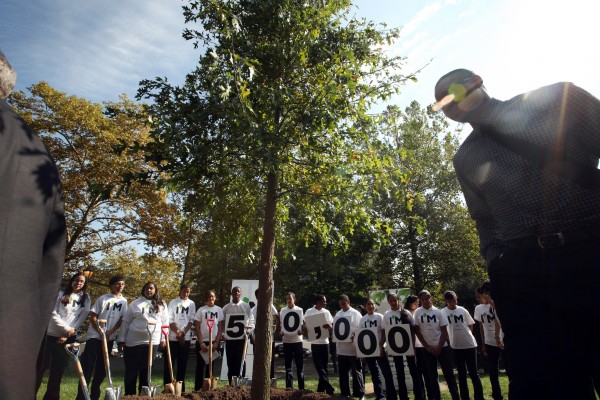
Queens is first in the entire city when it comes to maintaining its tree pruning system. The city first set out to plant 1 million new trees under former Mayor Michael Bloomberg and has since installed over 900,000. File Photo
Even after absorbing immense arboreal damage over the last four years, Queens tree pruning operations were hailed this week by the city comptroller as “a model for the rest of the city.”
Comptroller Scott Stringer published this weekend the management audit report on the Parks Department’s Street Tree Pruning Program, which revealed weaknesses in the operations of all Borough Forestry Offices, except for Queens. The program is responsible for maintaining approximately 650,000 trees citywide.
“Auditors found that Borough Forestry offices in the Bronx, Brooklyn, Manhattan and Staten Island were paying contractors for pruning the wrong trees, for pruning that was never done and were not keeping accurate lists of trees that were properly maintained,” said Stringer of his office’s review of Parks’ operations and contracted street pruning services from July 1, 2012, to Nov. 21, 2013.
In contrast, the controls put in place by the Queens Forestry Office appear to be functioning well and could be used as a guide to assist the other four borough offices, a comptroller’s office spokesperson explained to The Forum.
“If we can do it in Queens,” Stringer noted on Sunday, “we can do it citywide.”
Stringer, in his first year as the city’s chief financial officer, added that Parks’ “mismanagement” of the pruning program only increases the risk of personal injury and property damage from falling branches.
“The city pays out millions per year in settlements resulting from falling limbs,” he said. “Reducing the city’s exposure to these types of claims is a mandate that cuts across all city agencies.”
Included in the audit report were a series of recommendations to “correct the weaknesses.” The Parks Department, according to Stringer, needs to: Ensure that accurate, detailed lists of trees that meet the minimum size requirement and need pruning are prepared, including the trees’ locations; make sure that post-pruning inspections are performed and documented; ensure that contractors’ invoices are reviewed to make certain that payments are made only for trees meeting the contract specifications; make sure that the Manhattan Forestry Office tracks the streets that have been pruned by the contractor to help ensure that no streets are missed and that all trees in need are pruned; investigate and try to recover money that was improperly paid to prune trees that were less than five inches in diameter or were not pruned; and refer to the Department of Investigation any evidence Parks finds of an intentional falsification of invoices by a contractor.
In a response letter to the comptroller’s office, First Deputy Parks Commissioner Liam Kavanagh said that while the agency agreed with the six recommendations, it disagreed with the audit report’s “singular conclusion that Parks has inadequate controls over its contract pruning program for street trees that increase the city’s legal liability for the risk of injuries to people and property from falling tree limbs… While we believe there is room for improvement to the program, and we have made program improvements during this engagement, the report should recognize the positive impact this program has on neighborhoods throughout the five boroughs.”
By Michael Cusenza
